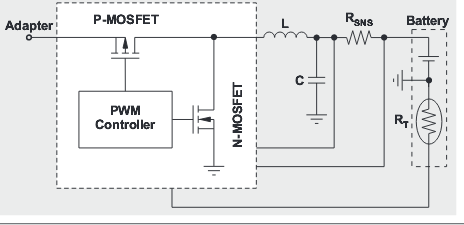Contents
hide
By Tahar Allag
Systems Engineer, Switching Charger Solutions, Battery Charging Products
Introduction
The wearable and personal-electronics industries
are booming. Devices in this market vary wildly by
application and use. These multifunction devices
are designed to help people in their daily activities
and make their lives comfortable. They can be
found in different shapes, colors, sizes, and safety
measures. They may differ significantly from each
other, but they all have one thing in common—the
need for a battery and a battery charger.

These portable devices are typically powered by
batteries installed internal to the device, which
must be charged efficiently and quickly on a
regular basis. The user’s charging experience also
needs to meet the requirement of safety, comfort,
and convenience.
This article presents the trade-offs between linear char
–
gers and switch-mode chargers. Specific challenges arise
with each topology when used to charge a battery pack in
wearable applications. The differences between linear and
switch-mode topologies are described with details about
how each topology can address the requirements of wear
–
able and personal electronic devices. These details range
from thermal performance to cost, including size, applica
–
tion area, features and flexibility, electromagnetic interfer
–
ence (EMI), bill-of-material (BOM) counts, charge time,
and so on. Finally, there is an evaluation for which charger
topology serves which type of requirement best. Under
–
standing charger-related system-level details enables the
designer to save both time and cost.
Introduction to battery chargers
Battery chargers can be generally classified into two topol
–
ogies: switch and linear-mode. Figures 1 and 2 show the
basic architecture of each control topology. As expected,
both topologies have pros and cons.
Switch-mode chargers use two power FETs (high-side
and low-side) to control the current going into an inductor.
Compared to linear chargers, they are more complex and
require a larger application area with a higher BOM count.
They also require an external inductor and additional
capacitors. However, the efficiency of switch-mode chargers
will be higher and thermal performance will be better than
linear chargers. Switch-mode chargers are also better
suited for applications that require higher c
For more detail:

